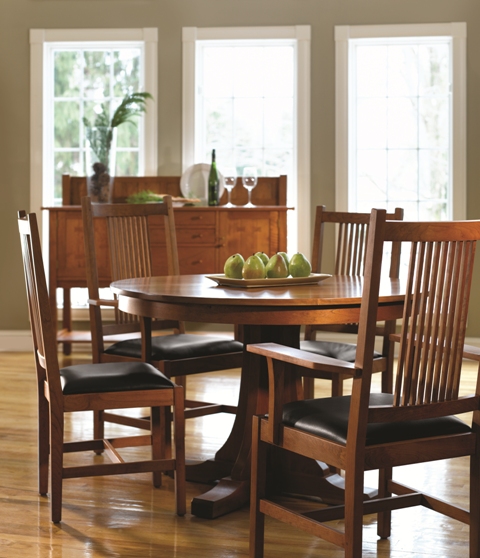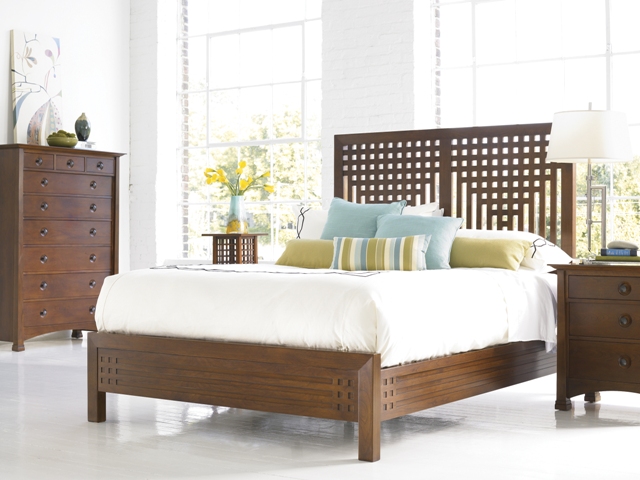Always in Style: Stickley furniture offers history lessons
/Wrenda Goodwyn • special to the Fort Myers News-Press• Feb. 23. 2013
For many, it is an acquired taste.
But homeowners who love Stickley furniture are addicted to its style, design and quality. Collectors search in earnest for antiques — early Stickley pieces are recognized as gems of the American Arts & Crafts movement — and can add new pieces because the furniture is still made today, in the company’s factory in Manlius, N.Y.
 Mission Dining Collection.“The quality of construction is amazing. Each piece is built when it is ordered ... the name of the customer is on the piece and remains on it as it progresses down the assembly line,” said Larry Norris, founder and president of Norris Home Furnishings, Southwest Florida’s exclusive Stickley dealer.
Mission Dining Collection.“The quality of construction is amazing. Each piece is built when it is ordered ... the name of the customer is on the piece and remains on it as it progresses down the assembly line,” said Larry Norris, founder and president of Norris Home Furnishings, Southwest Florida’s exclusive Stickley dealer.
“And Stickley is delivered on its own truck. When you purchase a piece of Stickley, you are buying a collectible of tomorrow.”
Stickley furniture is known for its hand-finished, solid wood furniture in styles including Mission, Traditional and Metropolitan. Founded in Fayettesville, N.Y., in 1900 by Gustav Stickley — considered to be one of the country’s most legendary furniture makers — Stickley is seen in museums from the Metropolitan to the Museum of Fine Arts.
Today, Stickley has more than 1,600 employees and produces furniture collections ranging from the company’s early Mission Oak and Cherry to Classics, Modern, John Widdicomb, St. Croix and more.
 Willow Bed: From the modern collection, the willow bed is part of the Edinburgh line. This beautiful bed was inspired by the Willow Tea Room in Sauchehall Street in Glasgow.
Willow Bed: From the modern collection, the willow bed is part of the Edinburgh line. This beautiful bed was inspired by the Willow Tea Room in Sauchehall Street in Glasgow.
The company burst into international prominence in the early 20th century with its Craftsman/Mission Oak designs. These were based on the notion that furniture should be “honest” — a reaction against the fake joinery, unnecessary gaudiness and shoddy workmanship of many of the pieces created in the early days of industrial furniture making.


